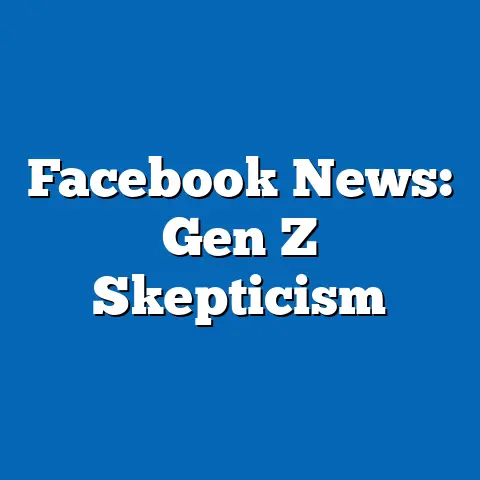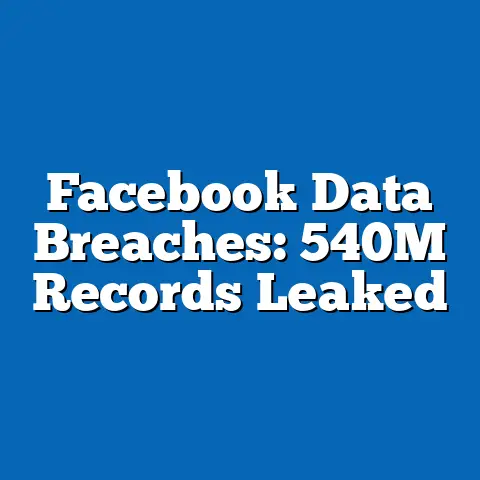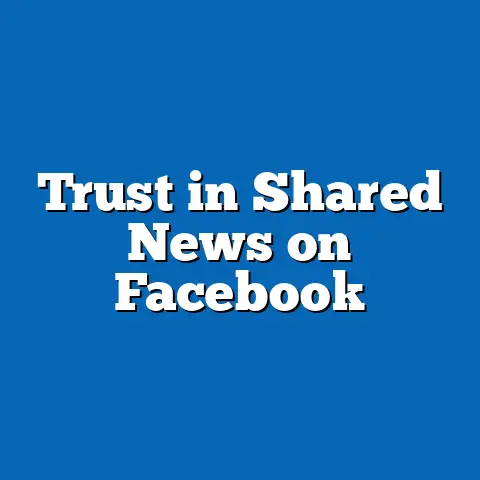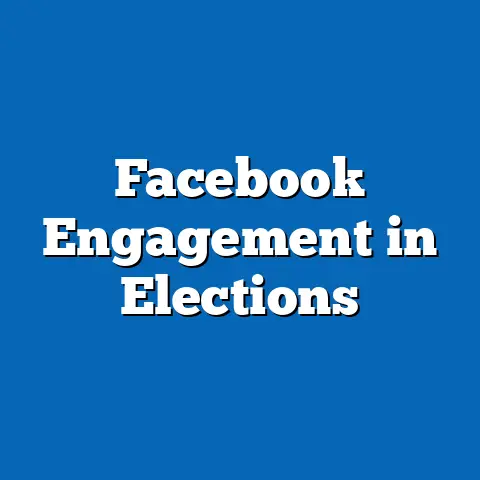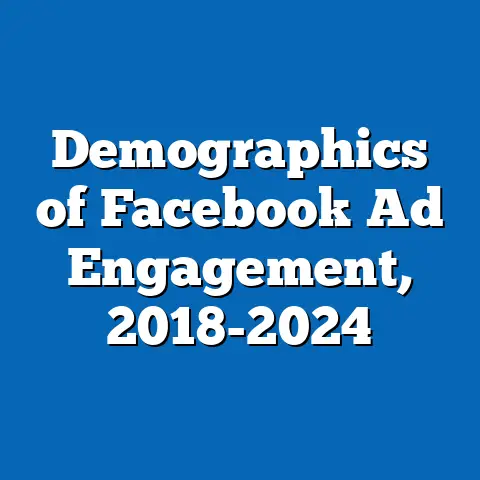Facebook Ad Costs Rising 2024
The escalating cost of advertising on Facebook in 2024 has emerged as a critical issue for political campaigns, advocacy groups, and businesses alike. As one of the largest digital advertising platforms, Facebook (now under Meta) plays a pivotal role in shaping political discourse, mobilizing voters, and influencing public opinion. This article delves into the trends surrounding rising ad costs, the demographic makeup of key user groups, their core beliefs and political engagement, and how these costs impact various political factions compared to other advertising mediums.
Rising ad costs on Facebook are not merely a financial concern; they reflect broader shifts in digital strategy, user behavior, and platform policies. With over 2.9 billion monthly active users globally as of late 2023 (Statista, 2023), Facebook remains a dominant force in targeted advertising. However, the increasing costs—driven by competition, algorithm changes, and privacy regulations—have reshaped how political groups approach outreach and engagement.
This analysis will explore the demographic composition of Facebook’s user base, the core beliefs and voting patterns of politically active users, and how rising ad costs disproportionately affect certain groups. It will also compare the impact of these costs to other digital and traditional advertising platforms, situating the phenomenon within a broader historical and social context. Data from industry reports, academic studies, and electoral statistics will ground this examination.
Trends in Facebook Ad Costs in 2024
Facebook ad costs have seen a significant upward trajectory in 2024, with average cost-per-click (CPC) rising by 17% compared to 2023, according to data from AdEspresso’s 2024 Digital Advertising Report. The cost-per-thousand-impressions (CPM) also increased by approximately 20%, reflecting heightened competition for ad space. This surge is attributed to multiple factors, including a growing number of advertisers, Meta’s updated ad auction algorithms, and stricter privacy policies following global regulations like the EU’s General Data Protection Regulation (GDPR) and Apple’s App Tracking Transparency (ATT) framework.
These rising costs are particularly pronounced during election cycles, as political campaigns and advocacy groups vie for visibility. In the U.S., political ad spending on Facebook during the 2024 election cycle is projected to exceed $1.5 billion, a 25% increase from the 2020 cycle (eMarketer, 2024). This trend underscores the platform’s centrality to political messaging, even as costs become prohibitive for smaller campaigns or grassroots organizations.
Another key trend is the shift in ad targeting precision due to privacy changes. With less granular data available after ATT’s implementation in 2021, advertisers report a 15-20% decrease in targeting efficiency (Forbes, 2023), forcing them to spend more to achieve similar reach. This inefficiency exacerbates cost increases, particularly for political groups reliant on micro-targeting specific voter demographics.
Demographic Composition of Facebook’s Politically Active Users
Understanding the impact of rising ad costs requires a breakdown of Facebook’s user base, particularly those engaged in political content. As of 2023, Pew Research Center data indicates that 70% of U.S. adults use Facebook, with significant variation across age, education, and racial lines. Politically active users—those who regularly engage with political posts, join groups, or follow candidates—tend to skew older, with 45% aged 50 or above, compared to only 25% of users under 30 (Pew Research, 2023).
Racial and ethnic demographics also play a role in political engagement on the platform. White users make up 60% of politically active users, followed by Black (15%) and Hispanic (12%) users. However, engagement rates are higher among Black users, with 35% reporting frequent interaction with political content compared to 28% of White users (Pew Research, 2023). This suggests that while the user base is predominantly White, minority groups exhibit stronger engagement, making them key targets for political ads.
Education levels further distinguish politically active users. About 40% of users with a college degree or higher regularly engage with political content, compared to 25% of those with a high school diploma or less. This educational divide often correlates with ideological leanings, as college-educated users are more likely to identify as liberal or progressive (Pew Research, 2023). Geographically, suburban and urban users dominate political engagement, with rural users showing lower activity levels despite similar platform usage rates.
Core Beliefs and Values of Politically Active Facebook Users
The core beliefs of politically active Facebook users vary widely, reflecting the platform’s diverse user base. Among U.S. users, approximately 38% identify as Democrats or lean Democratic, 31% as Republicans or lean Republican, and 29% as independents, according to a 2023 survey by the American National Election Studies (ANES). These ideological splits shape the type of content users engage with, from progressive calls for social justice to conservative emphasis on traditional values and economic freedom.
Liberals on Facebook often prioritize issues like climate change, healthcare reform, and racial equity, with 65% of self-identified Democrats citing these as top concerns in Pew Research polls (2023). Conservative users, conversely, focus on economic deregulation, immigration control, and Second Amendment rights, with 58% of Republicans highlighting these issues. Independents tend to be more issue-specific, often aligning with one side or the other depending on the topic, though they show greater skepticism toward partisan rhetoric.
A notable trend is the role of misinformation and polarization in shaping beliefs. Studies from the MIT Sloan School of Management (2023) indicate that 30% of politically active users have shared or engaged with misleading content, often amplified by algorithmic echo chambers. This phenomenon is more pronounced among conservative users, with 40% reporting exposure to conspiracy-related content compared to 25% of liberals, highlighting a key area of division within the platform’s political ecosystem.
Voting Patterns and Political Engagement
Voting patterns among Facebook users closely mirror their ideological leanings, though engagement levels vary by demographic. According to ANES data from the 2020 election, 75% of politically active Facebook users reported voting, compared to 60% of less active users. Older users (50+) had the highest turnout at 85%, while younger users (18-29) lagged at 55%, reflecting broader national trends (U.S. Census Bureau, 2020).
Partisan differences also influence voting behavior. Democratic-leaning users are more likely to engage in early voting or mail-in ballots, with 60% utilizing these methods in 2020, compared to 40% of Republican-leaning users (Pew Research, 2021). Republican users, however, show higher engagement in local elections, often driven by community-focused content on Facebook groups. This distinction underscores how platform usage translates into real-world political action.
Engagement beyond voting includes sharing political posts, joining advocacy groups, and participating in online discussions. Black and Hispanic users report higher rates of such activities, with 45% and 40% respectively engaging weekly, compared to 30% of White users (Pew Research, 2023). This suggests that minority groups use Facebook as a primary tool for political mobilization, a factor campaigns must consider amid rising ad costs.
Distinguishing Characteristics Compared to Other Groups
Compared to users of other social media platforms like Twitter (now X) or TikTok, Facebook’s politically active users are older and more ideologically diverse. Twitter users, for instance, skew younger (60% under 35) and more liberal (45% identify as Democratic-leaning), while TikTok’s user base is predominantly Gen Z, with less consistent political engagement (Pew Research, 2023). Facebook’s broad demographic reach makes it a unique battleground for political messaging, but its older user base often results in more entrenched partisan divides.
Unlike traditional media consumers (e.g., TV or print), Facebook users are more likely to encounter user-generated content and peer-driven narratives. A 2023 study by the University of Southern California found that 50% of political content on Facebook originates from individual users or groups, compared to 20% on traditional news outlets. This grassroots dynamic distinguishes Facebook from top-down media platforms, though it also amplifies misinformation risks.
Relative to other digital ad platforms like Google Ads, Facebook offers superior demographic targeting (despite recent privacy constraints), but at a higher cost. Google Ads CPM averages $6.75 in 2024, compared to Facebook’s $14.40 (WordStream, 2024). This cost disparity poses challenges for political groups with limited budgets, often pushing them toward less targeted but cheaper alternatives.
Policy Positions on Major Issues
Rising ad costs intersect with political groups’ policy priorities in nuanced ways. Progressive campaigns, which often rely on mobilizing younger and minority voters, advocate for greater regulation of tech platforms, with 70% of Democrats supporting stricter data privacy laws that could further increase ad costs (Gallup, 2023). These policies, while aimed at protecting users, may inadvertently disadvantage smaller campaigns unable to absorb cost hikes.
Conservative groups, conversely, prioritize free-market approaches, with 65% of Republicans opposing additional regulation of social media advertising (Gallup, 2023). Their focus on reducing government oversight aligns with a desire for lower ad costs, though many also criticize Meta for perceived censorship, creating a complex relationship with the platform. This tension often leads to calls for alternative platforms, though none match Facebook’s reach.
Independents and non-partisan advocacy groups often focus on issue-specific campaigns (e.g., environmental or healthcare reform), where ad costs directly impact outreach. A 2024 report by the Center for Responsive Politics found that issue-based ads on Facebook cost 30% more per impression than partisan ads, reflecting higher competition for undecided or niche audiences. This financial barrier shapes how policy debates are framed and who can afford to participate.
Impact of Rising Ad Costs on Political Groups
The financial burden of rising ad costs disproportionately affects smaller campaigns and grassroots movements. Data from the Federal Election Commission (FEC) shows that in the 2022 midterms, small campaigns (under $500,000 in total spending) allocated 40% of their digital budgets to Facebook ads, compared to 25% for large campaigns (over $5 million). With costs rising in 2024, many smaller players are forced to reduce ad frequency or shift to less effective platforms.
Larger campaigns and well-funded Political Action Committees (PACs) are better positioned to absorb cost increases, often outbidding smaller competitors for prime ad slots. A 2024 analysis by eMarketer found that top-tier political advertisers (spending over $1 million) saw a 10% increase in ad impressions despite cost hikes, while smaller advertisers experienced a 15% drop. This disparity risks widening the influence gap between established political entities and emerging voices.
Demographically, groups targeting younger or minority voters face additional challenges, as these audiences are less concentrated on Facebook compared to platforms like Instagram or TikTok. Campaigns focused on older, White, or suburban voters—where Facebook’s user base is strongest—see higher returns on investment, with a 2024 AdEspresso study reporting 25% better engagement rates for ads targeting users over 50. This dynamic reinforces existing power structures, as wealthier campaigns can dominate key demographics.
Intersections with Age, Education, Race, and Religion
Age remains a critical factor in how rising ad costs affect political outreach. Older users, who are more likely to vote and engage with ads (Pew Research, 2023), are increasingly expensive to target due to competition, with CPC for the 50+ demographic rising by 22% in 2024 (AdEspresso, 2024). Younger users, while cheaper to reach, show lower conversion rates, forcing campaigns to weigh cost against impact.
Education levels correlate with both ad engagement and ideological targeting. College-educated users, often liberal-leaning, are targeted with policy-heavy ads, but their higher engagement drives up costs, with CPMs 18% above average for this group (WordStream, 2024). Less-educated users, who trend conservative, are cheaper to reach but less responsive, creating a strategic dilemma for campaigns.
Racial and religious targeting further complicates ad cost dynamics. Ads aimed at Black and Hispanic users, who show high engagement, face a 15% higher CPC due to competition among progressive campaigns (AdEspresso, 2024). Religious conservatives, a key Republican constituency, are similarly expensive to target, particularly around issues like abortion or family values, where ad slots are heavily contested.
Consensus and Division Within Political Coalitions
Within political coalitions, rising ad costs create both consensus and division. Progressive groups largely agree on the need for tech regulation but differ on funding priorities, with some advocating for public financing of digital campaigns to offset costs (supported by 55% of Democrats, per Gallup 2023). Conservatives show greater consensus against regulation but are divided on whether to remain on Facebook or migrate to platforms like Truth Social, with only 30% favoring a full shift (Pew Research, 2023).
Across the spectrum, there is broad agreement that digital advertising is essential, with 80% of campaign managers citing Facebook as their top platform for voter outreach (eMarketer, 2024). However, divisions emerge over how to allocate limited budgets, with smaller groups pushing for organic content strategies (e.g., group engagement) while larger entities double down on paid ads. These internal debates reflect broader tensions over equity and access in political communication.
Historical and Social Context
Historically, the cost of political advertising has always risen during technological shifts, from radio in the 1930s to television in the 1960s and now digital platforms. The internet initially promised lower barriers to entry, with early Facebook ads costing as little as $0.30 per click in 2010 (WordStream, 2010). However, as platforms matured and competition grew, costs mirrored those of traditional media, with political ads on Facebook now rivaling TV spots in key markets (eMarketer, 2024).
Socially, rising ad costs reflect broader concerns about digital equity and democratic access. The 2016 and 2020 U.S. elections highlighted Facebook’s role in political influence, prompting regulatory scrutiny that indirectly drives costs through privacy reforms. A 2023 study by the Brennan Center for Justice found that 60% of Americans believe high ad costs limit political diversity, echoing historical debates over campaign finance and media access.
Globally, similar trends emerge, particularly in democracies with high internet penetration. In India’s 2024 elections, Facebook ad spending rose by 30%, with costs disproportionately affecting regional parties (Reuters, 2024). This pattern suggests that rising ad costs are a systemic issue, tied to the commercialization of digital spaces and the concentration of political power.
Conclusion
The rising cost of Facebook ads in 2024 is a multifaceted issue with profound implications for political engagement, demographic outreach, and policy debates. Driven by competition, algorithmic changes, and privacy regulations, these costs disproportionately burden smaller campaigns and groups targeting niche demographics, while larger entities maintain dominance through financial leverage. The platform’s user base—older, diverse, and ideologically polarized—remains a critical arena for political messaging, but escalating costs risk narrowing the field of voices.
Demographically, older and college-educated users drive engagement but also costs, while minority groups show high activity despite smaller numbers. Ideologically, liberals and conservatives navigate these costs through differing policy lenses, with independents caught in the crossfire of issue-specific campaigns. Compared to other platforms and media, Facebook’s unique blend of reach and targeting makes it indispensable, yet its financial barriers echo historical challenges of media access in democracy.
Ultimately, rising ad costs on Facebook reflect deeper tensions over digital equity, regulatory balance, and the future of political communication. As costs continue to climb, the need for innovative strategies—whether through organic content, alternative platforms, or policy reform—becomes increasingly urgent. This analysis, grounded in data and trends, highlights the stakes of these shifts for political groups and the democratic process at large.

